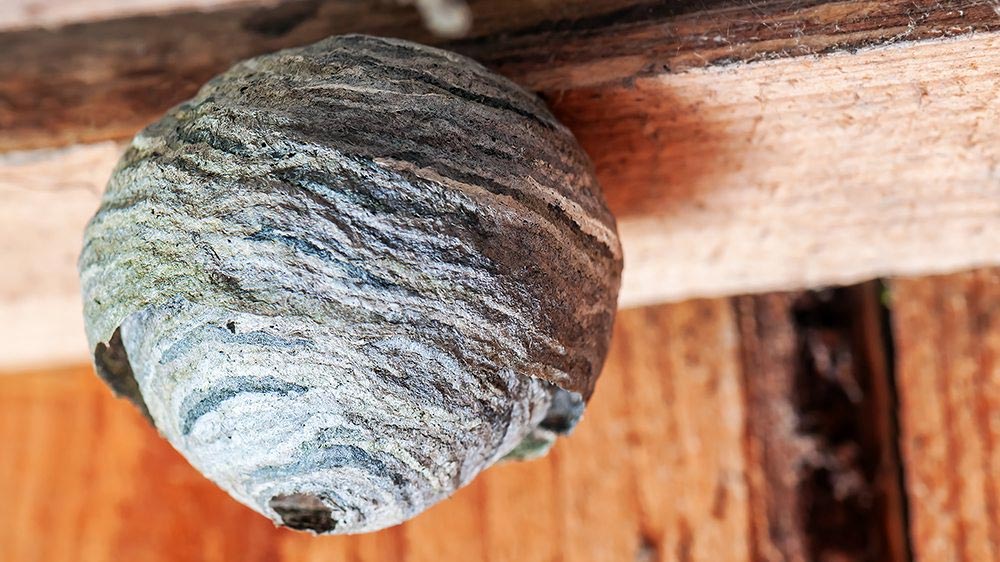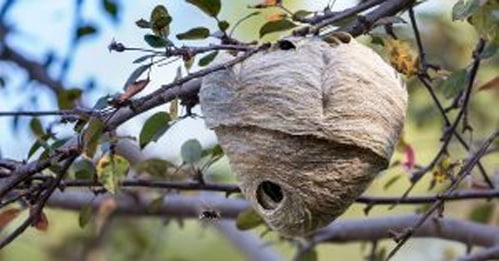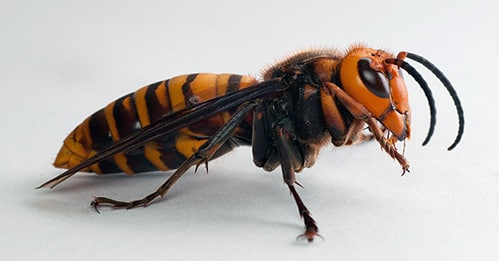Hornet Control Vancouver

Yelp

Homestars

Global News

Huffington Post

BBB

3 Best Rated

CBC
Hornet's Nest Removal Vancouver
Hornets control in Vancouver can constitute a huge problem especially during the summer season. These insects are drawn to heat and the need to survive often draw them to activities performed by humans..
Hornets are considered as pests when they make their nest near humans. This is because of their aggressive nature when it comes to defending their hives as they feel threatened especially when their nests are destroyed.
Oftentimes people fear their sting because they are more painful than a typical wasp sting containing about 5% of acetylcholine which might lead to life-threatening situations particularly for people who are allergic to the venom.
Unlike honey bees, hornets can sting repeatedly and not die after stinging because their stingers are finely barbed and cannot be pulled out of their bodies when disengaging. The Drones or the Male hornets are passive and are not aggressive, therefore they do not sting.
Signs and symptoms of their sting include redness, itching, swelling, and an allergic reaction includes difficulty breathing, swelling of the face, lips, throat, or mouth, rapid pulse, vomiting, dizziness, and a sudden drop in blood pressure. There are basically three kinds of hornet. They are categorized based on their physical appearance and their location. They are: Bald-faced Hornets, Asian Giant Hornets and European Hornets. Oftentimes, the Bald-faced Hornets are the most common species of Hornets in Vancouver.

How to Identify a Hornet's Nest
Hornets are insects from the family Vespidae (Genus-Vespa) and are closely related to the yellow jackets. They are reddish-brown, or black and white in color, and approximately 1-2 inches long with six legs.
Hornets construct their community hives by chewing wood to form a papery pulp. Most species of hornets build their nests around bushes, around door and window frames in the house, in trees and shrubs while others build theirs underground and in other cavities.
The nests are usually round about the size of a basketball with a single opening for the entry and existence of hornets and it has the characteristics of a paper. The nest will continue to grow depending on the size of the colony.
How to Locate a Hornet's Nest
Put a piece of meat or fruit and sugar in any area where you have noticed hornet activity. These items attract them and allow you to trace their flight patterns back to their hives and as soon as you get close to their hive it seems like a replica of an airport with flight arriving and departing.
As soon as you discover their nest moving away as far as possible, this is because of their aggressive nature in defending their nest when they feel threatened. It is recommended that you do not remove the nest yourself instead call in licensed pest control professionals in Vancouver who have the experience in removing them safely.

What You Find in a Hornet's Nest
In every hive there are three types of Hornets, they are The Hornet Queen, The Worker, The Male Hornet or Drone.
Queen Hornet
In each nest there is a queen which is quite dominating and is responsible for laying eggs because they are the most fertile hornets to produce more hornets. The queens are also responsible for starting new colonies.
The Workers
These consist of infertile females and some males. They have the responsibility of building the hive, feeding the young ones, gathering food for the queen and their young ones and securing their hive.
The Male Hornets
The male hornets, also called drones, have one role of mating with the queen and die as soon as this task is complete, this explains why male hornets are fewer. Male and female hornets don't have much of a noticeable difference.

Hornet Diet & Feeding
These insects eat leaves, rotting sweet fruits, honey and some tree saps like that of the oak trees but they are also predators feeding on many flies, bees, flies, caterpillars, crickets, bugs and other insects. Due to their size and strong venom, they can kill large insects like the grasshoppers, honey bees, and locust easily. When the prey is killed by an adult hornet, it is chewed into a pulp and fed to the larvae still growing in the nest while the larvae of hornets in turn secrete an amino and sugar containing substances that is consumed by the workers and queens.
How to Control Hornet's
Hornets can nest in homes thereby posing a great danger for homeowners especially those who are allergic to their venom when stung. Controlling hornets around your home will reduce stings and still allow them to live, therefore allowing them to continue controlling the population of the pests in your area as they are eco-friendly in nature.
Prevention is the primary way to control hornets. The following are ways you can control hornets

There are situations where more is required to get rid of them. In situations like this, a licensed pest technician in Vancouver should be contacted because they are well trained with the appropriate tools to help remove them safely and effectively. At Pesticon Pest Control, we get rid of these pests and give you the optimum satisfaction.
GOOGLE REVIEWS
CALL US NOW TO REMOVE HORNETS
Areas We Serve
Our Expert Pest Control Technicians serve Vancouver and the surrounding area with same day or next day service. If you're having a pest or wildlife control issue, please contact us for a free quote.
